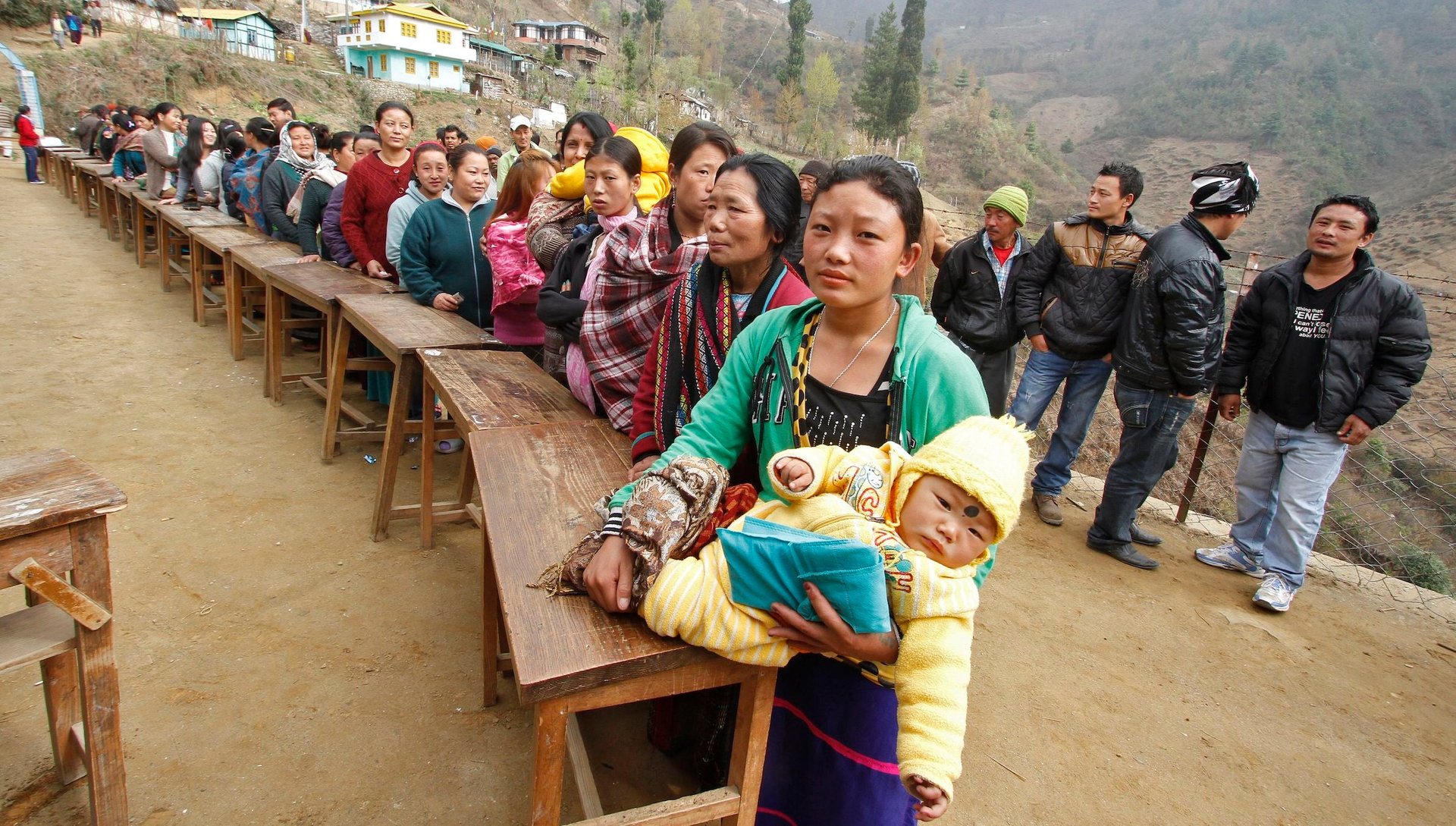The budget lavished funds on India’s northeast, where money can only do so much
Prime minister Narendra Modi is out to reward a new, potentially loyal, constituency—India’s northeastern states.


Prime minister Narendra Modi is out to reward a new, potentially loyal, constituency—India’s northeastern states.
In its first budget since coming to power, the new government has opened its coffers for the largely underdeveloped region that shares a 4,500 km border with Bangladesh, Bhutan, China, and Myanmar. Here’s the list:
- Rs3,000 crore ($500 million) for roads
- Rs1,000 crore ($166 million) for railway connectivity
- Rs100 crore ($16 million) for a sports university in Manipur
- Rs100 crore ($16 million) for organic farming
- A 24X7 TV channel dedicated to the region
- An agricultural institute in Assam
- An annual event for Himalayan sports
- Also, Rs5,116 crore ($850 million) from the railway budget
In all, Rs53,706 ($8.9 billion) has been allocated for the financial year 2014-15, said finance minister Arun Jaitely in his budget speech last week, as the members of parliament thumped their desks in appreciation.
After all, Modi owes them; the northeast gave him, and the BJP, an unusually robust mandate. With huge voter turnouts, the party and its allies won an unprecedented 10 out of 25 seats in the region in the recent general elections.
The new government, however, may be giving the northeast more than it can proverbially chew.
It is not that the region doesn’t have enough money. Most of central government’s ministries compulsorily need to earmark at least 10% of their annual budget for expenditure in the northeast. And the unused portion of this goes into a fund called the Non-Lapsable Central Pool of Resources (NLCPR). As the name suggests, this fund is exempt from the general rule of the Indian budget, that unused funds lapse at the end of the allocation period.
At the end of 2011, according to the latest number available on the website of the Ministry of Development of North Eastern Region, the total unspent amount in the NLCPR was over Rs 1,700 crore ($280 million).
Part of the problem is how the funds are disbursed, according to a recent report on project implementation in the region (pdf), since the amounts earmarked for the last two quarters are released depending on utilization in the first quarter.
“In the Northeast, where the monsoon months coincide with the first quarter of the financial year, implementation is particularly poor, and this creates the bottleneck and a perception of lack of funds,” the report explains.
The implementation shortfall is so dire that a Planning Commission report (pdf) on transport infrastructure in 2012 warned of a vicious circle of non-completion of road projects.
Funding agencies sanction new projects because they are required to utilize their allocations, which state governments readily accept, the report explained. “Ultimately, the bunch of incomplete projects gets inflated with large committed liabilities. Construction of roads are sometimes treated as means of distributive justice and not projects to be professionally managed,” the report added.
The situation is such that there have been occasions where a 30-km-long road has taken six years to build, with work divided into over 25 parcels.
The railways, on the other hand, should be able utilize Rs3,500 crore ($580 million) to build 150-200 km of tracks annually, the report suggested. But only if track alignments can be firmed up quickly, surveys updated and a strict monitoring regime put in place.
Yet, this year alone, the government will pump in over Rs6,000 crore ($1 billion) into building railway infrastructure in the region. And another Rs1,000 crore for roads.
Unmistakably, there is a strategic angle to this spending spree. Even as Modi draws closer to China for trade and investment, he has kept an eye on Beijing, which considers a part of the northeast—Arunachal Pradesh—as its own territory.
Former Indian Army Chief General V.K. Singh, who also previously served as the senior most army officer in the region, has been made the minister in charge of the northeast. And Kiren Rijiju, a politician from Arunachal Pradesh, is currently India’s junior home minister.
And not only was India’s defence budget hiked by 12% to Rs2.29 lakh crore ($38.35 billion) last week, there have also been reports that the government is looking to spend Rs5,000 crore ($830 million) to create settlements along the India-China border. This is in addition to the huge sums sanctioned by the previous government to build roads along the same boundary.
But the northeast also has a turbulent relationship with India’s armed forces, which have been accused of human rights violations in the region. Alongside its strategic push, the Modi government could have considered larger investments in education, healthcare and power.
Instead, it has chosen to spend on projects that smack of tokenism.
The proposed television channel is a typical example. While the budget made no mention of the possible investment into this, the utility of a single television channel for a linguistically diverse region isn’t exactly clear. Over 200 languages were spoken in the northeast, according to the 1971 census, and regional media has exploded in recent years, creating a crowded marketplace where a state-run channel is likely to find it difficult to gain traction.
And in Manipur—home to boxing champion Mary Kom—Rs100 crore will be spent on establishing a new sports university.
While that may help a few, it’ll do little to control the state’s raging unemployment crisis. It is rather challenging to make multiple champion boxers out of 700,000 educated, jobless youth.